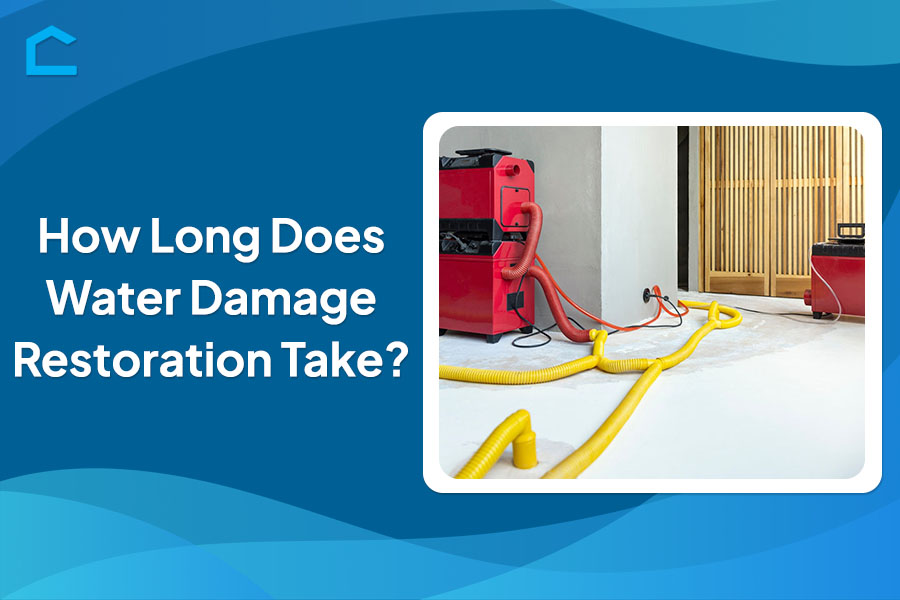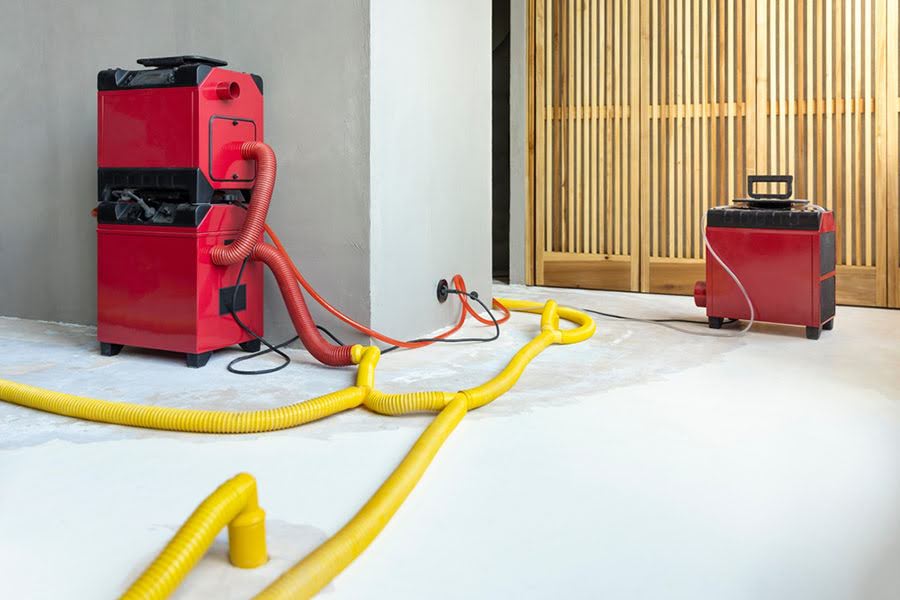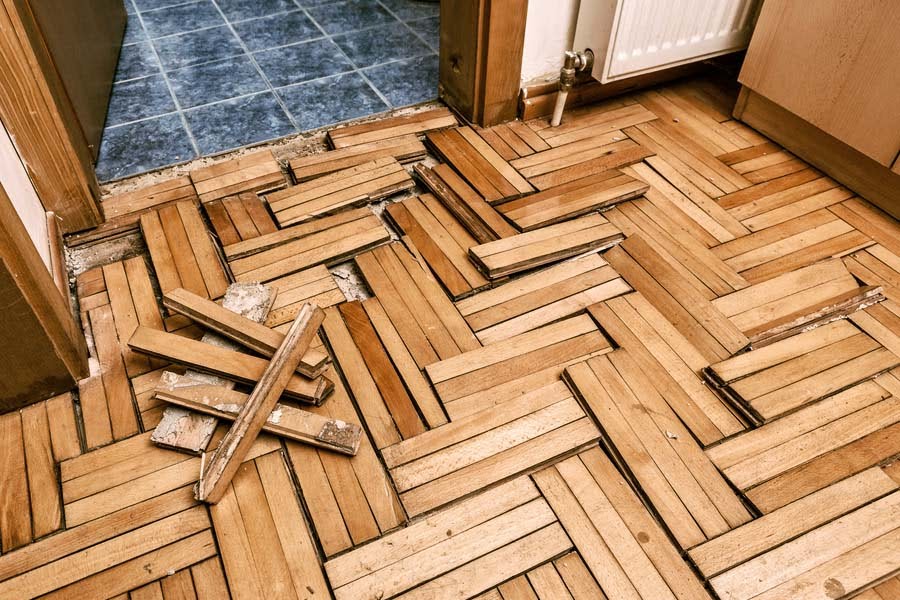How Long Does Water Damage Restoration Take?

Water damage can be a significant and stressful event for any property owner. Whether caused by a burst pipe, flooding, or a severe storm, the process of restoring a property to its pre-damage state is crucial but often complex. But how long does water damage restoration take? What factors influence the process?
In this article, we delve into the intricacies of water damage restoration timelines and explore the factors influencing restoration time. We will also discuss factors that can speed up or delay the process.

Source: shutterstock.com / Photo Contributor: Lea Rae
Factors Influencing Restoration Time
Extent of the damage
Restoration time after water, fire, or smoke damage depends heavily on the extent of the damage. If the affected area is larger, it naturally takes longer to restore. This is because a bigger space requires more cleaning, drying, repairs, or replacements for materials and contents.
When it comes to water damage, the severity of the damage is crucial. Minor clean water damage, like from a leaky pipe, can be resolved relatively quickly.
However, heavy sewage backup or fuel spill damage demands additional decontamination steps. Fire damage often involves extensive charring, soot residues, and structural damage, leading to lengthy repairs and even reconstruction efforts.
Drying and dehumidification process
You need to dry and dehumidify thoroughly, regardless of the cause of the damage, before you can start the restoration process. All wet materials must be completely dried to prevent further damage and stop mold growth.
Dehumidifiers are essential for continuously removing moisture from the air and affected surfaces until they reach the appropriate dryness levels, as moisture meter readings indicate. This drying phase may span several days or weeks, depending on the materials’ saturation and humidity levels. You must note that no permanent repairs should be made during this drying period.
Area of the home affected
Another factor in the restoration timeline is the specific area of the home that sustained damage. Damage in open, easily accessible areas like living rooms and bedrooms can be addressed more quickly.
But it becomes much more labor-intensive when water, fire, or smoke enters confined areas like attics, crawl spaces, or behind walls. Fully remediating these areas requires extra effort. Special equipment must be carefully maneuvered into these tight spaces to thoroughly dry, clean, and deodorize every affected surface.
Water migration is also a concern. It can seep into other home areas that may not be obvious, so all spaces must be checked and included in the restoration process.
How Long Does Water Damage Restoration Take?
If you’re dealing with minor leaks or spills in just one room, it usually takes about three to five days to dry out completely, especially if you act fast. But if you need to replace drywall or flooring, expect another one to two weeks on top of drying time.
For more significant damage affecting multiple rooms, drying out all affected areas might require five to seven days. However, if the water is contaminated, it takes seven to 10 days. After drying, repairs typically span two to four weeks for clean water incidents and three to six weeks if the water is contaminated, possibly leading to mold growth.
Timelines for extensive water damage
Restoration timelines are much longer when water damage is widespread from major flooding or contaminated sources like sewage backups. So, how long does water damage repair take when the damage is severe?
With severe flooding, just the initial drying process can take two to four weeks or two to six weeks if hazardous materials and mold remediation are required first. Contaminated water often necessitates the reconstruction of materials like drywall and insulation.
The reconstruction phase can span six weeks on the low end and up to eight months or more for full home rebuilds after catastrophic incidents. Missed pockets of moisture can also extend timelines by causing recurring mold and odor issues down the road.

Source: shutterstock.com / Photo Contributor: wabeno
Factors That Can Speed up or Delay the Process
Immediate response and action are crucial for speeding up the process of water damage restoration. Delays from insurance claims and approvals can significantly extend timelines.
For this purpose, we recommend calling in professional mitigation services within the first 24-48 hours. They can rapidly extract water and start drying with industrial equipment, preventing further migration and saturation.
Well-equipped restoration companies with trained crews can efficiently work across multiple areas simultaneously. However, many key steps require insurer approval first. Delays in adjuster response, damage assessment, and coverage verification can halt progress. Careful documentation of all damage is necessary but can be time-consuming.
Additionally, debates over coverage may arise. In such cases, you might need public adjusters or attorneys to interpret policies and coverages to allow work to proceed.
Conclusion
Water damage restoration is a meticulous process that requires patience and understanding. Minor incidents can be resolved within days, but severe cases may take months to fully restore. Knowing how long does water damage restoration take can help you plan accordingly.
The timeline depends on the extent of the damage, the type of water involved, and the materials affected. Prompt action, professional expertise, and efficient communication with insurance providers can expedite the process.
Embrace this journey, stay informed, and trust your restoration professionals to guide you through this challenging phase.
